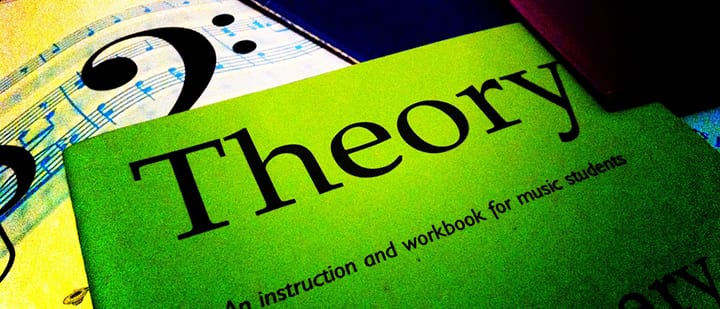 Sure, music theory is complex — but there’s no need to fear it! Here, Jamaica Plain, MA teacher Noaa R. shares four steps to get you started…
Sure, music theory is complex — but there’s no need to fear it! Here, Jamaica Plain, MA teacher Noaa R. shares four steps to get you started…
Many students tend to avoid studying music theory and harmony. This can stem from a fear of compromising one’s creativity with rules and numbers, a failure to connect concepts with application, or from feeling overwhelmed by the perceived volume of material to be learned. However, when you approach theory as an exploratory process that helps you grow, navigate your musical world, make creative choices faster, train your ears, and generate new ideas, it’s a total blast. Here are four steps to changing your perspective as you learn music theory.
1) Realize Why You’re Studying Theory
The Circle of Fifths, triads, intervals, modes with Greek names, and complicated sounding chords like C7(b9b13) can seem like a pointless jumble of terms and stock patterns to memorize — but the facts are:
- Music theory is tools — it evolved as a way to explain, organize, and codify the felt experience of music. All these names correspond to textures or sonic events — which have special relationships to each other and provide you with a set of devices to be recognized in listening and used judiciously in composition and improvisation, just like rhetorical devices in writing or speech. When you understand what they are, what they sound like, and recognize the names for them, they’re at your disposal. You are thus freer to make music as opposed to groping blindly in the dark.
- Yes, you’re studying patterns and devices that other people have used before. This means nothing – you will find your own voice regardless, using the same means to your own musical end. You didn’t invent a new language when you learned to speak, yet you express yourself fluently and uniquely using the same words, phrases, and syntax as other English speakers.
2) Get Curious
Make music theory a joyful exploration of new sounds. When you learn a new chord, scale, or progression, treat it like a strange and wonderful animal you are encountering for the first time.
This isn’t much of a stretch – say you are learning about minor 7th, major 7th, and dominant 7th chords. Play them on your instrument. What colors do they have? How do they differ? How do they make you feel? What is difference in the structure of these chord qualities that makes them so distinct? Do they remind you of sounds you’ve heard before?
Form a unique relationship with every sound through immersion and play — and I mean literal play. Mess around with these new musical building blocks. Create little grooves and ideas, and maybe you’ll even write a song. The goal is to create an experience connected with the concept — that is the key to retaining information, not rote memorization.
3) Make it Real
Bring concepts out of the intellectual ether into experiential reality immediately. The seven diatonic triads of the major scale should never be left as dots on a page. It’s important to be able to write and spell them, so that you can visualize and understand them. But they aren’t a math problem – they are seven textures relating to a tonal center with distinct relationships and near-infinite possibilities for creative combination. Not only that, the vast majority of popular western music uses just these seven chords.
Learn the triads on your instrument, then find them on another instrument (piano is a great tool for learning in this regard by virtue of its intuitive and linear organization). Sing them as well – often it takes changes of context and approach for something to sink in.
Mix and match different triads, one per measure, to create a four-bar progression. What sounded good? What didn’t? What grabbed your ear? Try writing a melody over it. Ask your teacher to help you analyze a tune you’ve always loved and compare it to your progression – you’ll be thrilled to recognize familiar patterns after a few of these analyses.
4) Stop Worrying
Music is vast. There’s a lot to memorize and keep track of. Understand that you can only process a certain amount at once, so work with bite-size chunks. Patiently trust the process, and you will find concepts become second nature over time. Keep in mind that you need only learn music theory as much as serves the fulfillment of your goals — whether you’re a singer-songwriter just looking to spice up the same old progressions or you’re interested in jazz improvisation. Find what’s relevant to you and don’t worry about the rest.
Theory only exists as an organized way for us to explore what is available, and to understand deeper what we’re already familiar with so that we can use it more intelligently and artistically. It’s there to serve you. So dive in and have fun!
Noaa R. teaches guitar, composition, ear training, and music theory in Jamaica Plain, MA. He is currently working toward his Diploma in Professional Music from Berklee College of Music. Noaa has been teaching music as a private instructor since 2011. Learn more about Noaa R. here!
 Photo by APMus
Photo by APMus
Suzy S.

